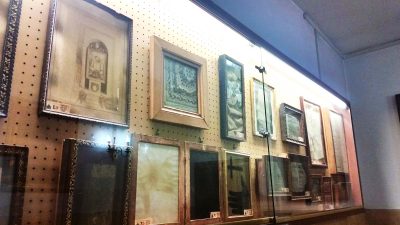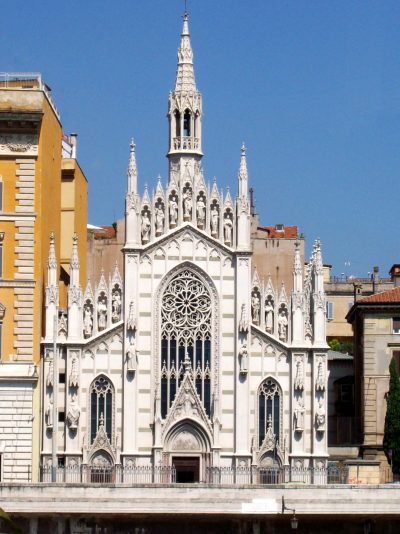Have souls in Purgatory visited people on earth?

The Museum of the Souls in Purgatory
Nestled in Rome just outside the Vatican, a small unassuming museum dedicated to the souls in Purgatory displays simple items such as prayer books and clothing.
Nothing too unusual, until you realize that each allegedly show the marks of the deceased – such as inexplicably burned fingerprints – when they appeared to loved ones asking for prayers from Purgatory.
The Museum of the Souls in Purgatory is located inside of the Church of the Sacred Heart of Jesus in Prati, near Castel Sant’Angelo, and contains around 15 of these testimonies and artifacts, collected from around Europe by a French priest Victor Jouët.
In many of the cases, it is held that the marks were left as proof that the deceased had really appeared, asking for prayers or for Masses to be said for their souls.
One artifact in the museum is the fingerprint of Sr. Mary of St. Luigi Gonzaga, left on a pillowcase when she appeared to Sr. Margherita of the Sacred Heart on the night after she died in 1894.
The appearance was recorded in the archives of the monastery of St. Clare of the Child Jesus in Bastia, Italy. According to the records, Sr. Mary told Sr. Margherita that she was in Purgatory as expiation of her lack of patience in accepting God’s will.

The Church of the Sacred Heart of Jesus in Prati, near Castel Sant’Angelo
The Museum of the Souls in Purgatory was created by Fr. Victor Jouët in 1897. A Missionary of the Sacred Heart, Fr. Jouët founded in Rome the Association of the Sacred Heart of the Suffrage of the Souls of Purgatory. The chapel the Association used from 1896-1914 was located at the place where the Church of the Sacred Heart of Jesus is now.
Other artifacts in the museum include the print of a hand and a cross left on a the wooden table of Venerable Clara Isabel Fornari, abbess of the Poor Clares of the Monastery of St. Francis in Todi, Italy, by the deceased Fr. Panzini, on Nov. 1, 1731.
There is also a copy of an Italian 10 lira banknote, one of 30 notes left at the Monastery of St. Leonardo in Montefalco by a deceased priest between Aug. 18 and Nov. 9, 1919.
Catholic teaching on the afterlife is that there are three places for a soul to go after death: Heaven, Hell, or Purgatory.
According to the Catechism of the Catholic Church, those who go to Heaven are “those who die in God’s grace and friendship and are perfectly purified live for ever with Christ.”
Those souls that go to Hell are those who have freely chosen through mortal sin “exclusion from communion with God and the blessed.”
Purgatory is a place where the souls go who die in friendship with God but are still imperfectly purified. Purgatory is where “after death they undergo purification, so as to achieve the holiness necessary to enter the joy of heaven.” These souls are ensured eventual entrance into Heaven, once they are purified.
The Church teaches that souls in Purgatory rely on the prayers of souls still on Earth to relieve some of their temporal suffering and speed their journey to Heaven. In return, the souls in Purgatory can also pray for those on earth.



There is an old legend, which says that during the Ember Weeks, the souls in purgatory are allowed to appear to those on Earth who are praying for them. Australian Ember Days don’t really follow the Lenty, Penty, Crucy, Lucy system, so even if your are superstitious, your mileage may vary.
I don’t get the comments above, so I’d like an explanation of it.
The Australian Catholic Bishops Conference sets Ember Days in Australia differently to the rest of the world. Ember Weeks are traditionally the week after the first Sunday of Lent, the week after Pentecost, the week after Holy Cross Day and the week after St Lucy’s Day. This is why children are taught the mnemonic “Lenty, Penty, Crucy, Lucy”.
The Wednesday, Friday and Saturday of Ember Weeks are days of fast and abstinence. It’s an old wives’ tale that souls in purgatory visit those who pray for them during Ember Weeks.
Bede Griffith wrote, “when we speak of the ultimate state we are speaking of a mystery which cannot properly be expressed, and all language is defective”. I find this more helpful than the above article and the popular understanding of the afterlife we all learnt as children. David McCann